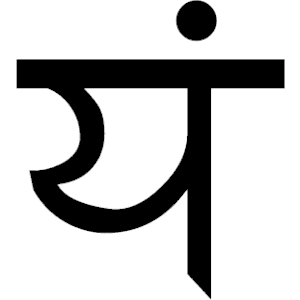Sanskrit is easily understood by people from all parts of the country, and it is the preferred combination for bringing the country together. Sanskrit has a lot of amazing works. That language is inextricably related to our Indianness. Sanskrit must be learned in order for subsequent generations to study them.
According to a Nobel Prize-winning physicist. Dr C.V. Raman, an Indian national language must be considered Sanskrit. A country as large and diverse as India requires a national language that can unite and harmonise its people. For millennia, Sanskrit has served as a powerful unifying factor. Sanskrit united the Indian people in philosophy, heart, and culture even when the country was not a unified political state.

Sanskrit’s writing is the first distinguishing feature that sets it apart from other languages. Devanagari is the most used writing system for Sanskrit. Once you’ve learnt it, it’s simple to write and say.
Someone who does not know Sanskrit is definitely lacking in some way. He will not able to gain a good understanding of the Vedas, Geeta, Upanishads, Ramayana, Mahabharata, Arthashastra, and many more texts, which are still recognised as the best in our civilization. Despite the fact that translated versions exist, they always build a barrier between the reader and the original work.
It is now recognised that knowing Sanskrit speeds up the learning of English. This information may surprise some people at first. However, we must remember that it contains great grammar and a well-constructed structure. Sanskrit blends these numerous features that another dialect possesses independently, which is perhaps why if anybody learns Sanskrit well, he can acquire English rapidly.
Not only English, but any Indian language is simple to learn once we have mastered Sanskrit because the syntax, pronunciation, and script are nearly identical.
Because of its widespread use in religious literature, notably in Hinduism, Sanskrit has a significant cultural significance in India and because most current Indian languages are directly descended from or heavily affected by it.

In ancient India, knowing Sanskrit was a sign of social class and scholastic achievement, and it was primarily taught to members of the upper castes (social groups based on birth and employment ability). Brahmins, particularly, continued to use Sanskrit during the mediaeval period, both verbally and in writing (the highest caste of Hindu priests) for academic communication.
Sanskrit is widely spoken on the Indian Subcontinent today. Since India’s independence in 1947, more than 3,000 Sanskrit writings have been written, and much more than 90 weekly, monthly, and quarterly newspapers have been produced in Sanskrit. Since 1970, Sudharma, a Sanskrit-language daily newspaper, has indeed been published in India. Sanskrit is widely employed in Carnatic and Hindustani classical music, along with Buddhist and Jain religious traditions.








